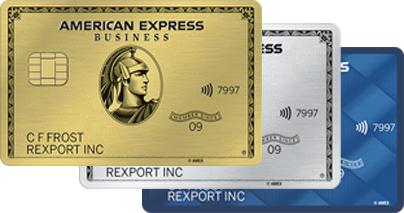
10 Best Practices to Manage Small Businesses Cash Flow
By Megan Doyle | American Express® Freelance Contributor
7 Min Read | June 30, 2021
Summary
Managing cash flow can be tricky, especially for startups and other small businesses that just don’t have the same capital inflows as larger enterprises. Smooth financial operations often rely on being able to pay suppliers as late as possible while getting customers to pay invoices as quickly as possible. But that’s not always feasible, and even the most carefully run business is destined to hit a cash flow snag from time to time. These 10 cash flow management tips can help businesses more effectively meet operating expenses and invest in the future.

What is Cash Flow Management for Small Businesses?
Cash flow management is how a business manages the money entering and exiting the business. A well-crafted cash flow management strategy can help a small business understand operating expenses and plan for future investments. When a small business manages cash flow well, it’ll be able to identify trends that could negatively impact the business and counteract them before the company is at risk. These 10 cash flow management tips can help businesses more effectively meet operating expenses and invest in the future.
1. Understand the Importance of Cash Flow Management in Business
Healthy businesses must be able to generate enough cash to meet daily operating expenses with enough left over to invest in growth. This requires careful cash flow management. But the most important step in managing cash flow is understanding what cash flow is and what it means for your business. Put simply, cash flow is the amount of cash a business generates or consumes over a specific period. Positive cash flow means more cash flows into the company than out of it, and is ideal – especially long-term. Negative cash flow means outflows exceed inflows.
Cash flow is not to be confused with profit. Businesses may appear profitable on paper but can still fail because cash flow is out of balance or negative – the company may be paying its debts too early or customers may be taking too long to pay, for example. Some businesses incorrectly assume they can understand cash flow by looking at a profit and loss statement, but cash flow analysis must factor in changes in accounts receivable and payable, expenditures, inventory, and other business expenses.
2. Establish a Break-Even Point
For small businesses just starting out, it’s important to remember that it can sometimes take years to start earning a profit. Establishing a break-even point – the point at which total sales equal total expenses – gives a business a tangible goal to work toward and can create a context for managing cash flow. Understanding the break-even point can help managers figure out the critical level of business they should be targeting. This might inspire the need to create a more stringent budget to better costs and find ways to cut expenses or increase sales, for example.
3. Track and Measure Cash Flow
Good cash flow management practices rely on a business’ ability to track, measure, and analyze its cash flow over time. It’s important to always know how much working capital is needed to operate, what the business’ break-even point is, and the state of accounts payables and receivables. Careful tracking will also help accountants create cash flow statements, which provide an overview of how the business uses cash over a period of time. Cash flow statements can be a valuable way to measure the financial health of a business, and may be used by lenders to determine whether a business has enough cash to pay its expenses, for example. An effective way to track and measure cash flow is to use a cash flow management tool that automatically manages the flow of incoming and outgoing funds.
4. Always Keep Financial Statements Updated
A business can’t get a full picture of its cash flow without accurate and updated financial statements. Real-time access to financial statements can help business owners spot potential issues and be proactive about preventing a cash flow squeeze. One of the most straight forward ways to manage financial statements is to use accounting software that can work seamlessly with a cash flow management tool. Together, these solutions can provide real-time visibility into all financial data and automatically generate accurate financial statements. For businesses that prefer to outsource their accounting services or rely on internal accounting professionals who manually manage finances, it’s critical that they provide regularly updated financial statements.
5. Act Fast to Minimize Cash Flow Management Crises
It can be tempting to turn a blind eye to small hiccups in hopes they resolve themselves, but it’s wise to never ignore even a small cash flow issue. Don’t hesitate to act when things get tight. If potential cash flow problems are left untouched, they may quickly get out of hand. And the bigger the cash flow crunch, the greater the chance a business will strain its relationships with suppliers and creditors. Consider ways to cut costs if need be, such as selling or leasing out idle equipment.
6. Aim to Increase Sales, Not Expenses
A general cash flow management best practice is to always aim to increase sales, not expenses. Staying as lean as possible and being careful with credit can help businesses go beyond their break-even point to turn a profit. Cut expenses wherever possible, and use proven marketing techniques to increase sales, such as creating a carefully thought-out marketing sales funnel that catches the attention of your desired audience. Earning satisfied customers and working to keep them happy generally will pay off with referrals and added business.
7. Prioritize Relationships with Customers and Suppliers
During tight times, a business may be able to contact the customers and suppliers it has a strong history with to request more favorable terms. Customers may be willing to pay invoices sooner, or suppliers may be willing to offer a payment extension. However, the key is to establish strong, trusting relationships before you’re in a situation that requires you to ask customers or suppliers to accommodate the business’ needs. For example, a customer may be willing to pay sooner if you gave them an extension in the past, or a supplier may be willing to extend your payment date if you have a history of on-time or early payments. If the cash flow situation is dire, some vendors may be willing to renegotiate contract terms to give the business more time to pay, or they may offer discounted bills in exchange for a long-term purchasing agreement.
8. Offer Early Payment Incentives
If it makes sense for your industry, it can help to ask for deposits or early milestone payments. For example, marketing agencies, web designers, or even construction businesses stand to benefit from advance payments to cover costs while jobs are in progress. For other industries, avoid providing customers with leeway when appropriate. Small businesses, especially startups, rely on receiving every dollar on time, so late or missed payments can stall growth and contribute to cash flow crunches. Offering discounts for early payments can motivate customers to pay sooner. Businesses may also wish to consider penalizing late payments to help disincentivize late payments and compensate for losses if and when late payments do occur.
9. Build an Emergency Fund for Seamless Cash Flow Management in Tough Times
Emergency funds aren’t limited to personal finance. Businesses should strive to build a cash reserve as well, because most businesses won’t always be able to fall back on profits, especially during slow seasons or market downturns. A general rule of thumb is to establish a cash reserve that can carry the company for about four months, but three to six months is a good target range depending on the business and its needs. This financial cushion can help businesses rise above shortfalls. However, establishing an emergency fund requires a business has positive cash flow. Consider stowing away profits before planning a growth initiative to ensure you have an accessible reserve if and when needed.
10. Grow Strategically
Being too aggressive about growth, such as investing in new resources too far ahead of the revenue they will generate, can hurt cash flow. For example, signing a new lease, hiring more staff, or purchasing new equipment might seem necessary for growth ¬– and they generally are – but rapid growth can lead to cash flow troubles. Be sure your business has the sales and financial cushion to support new growth and expansion.

You know what your business needs
Give it the spending power it's been looking for.






